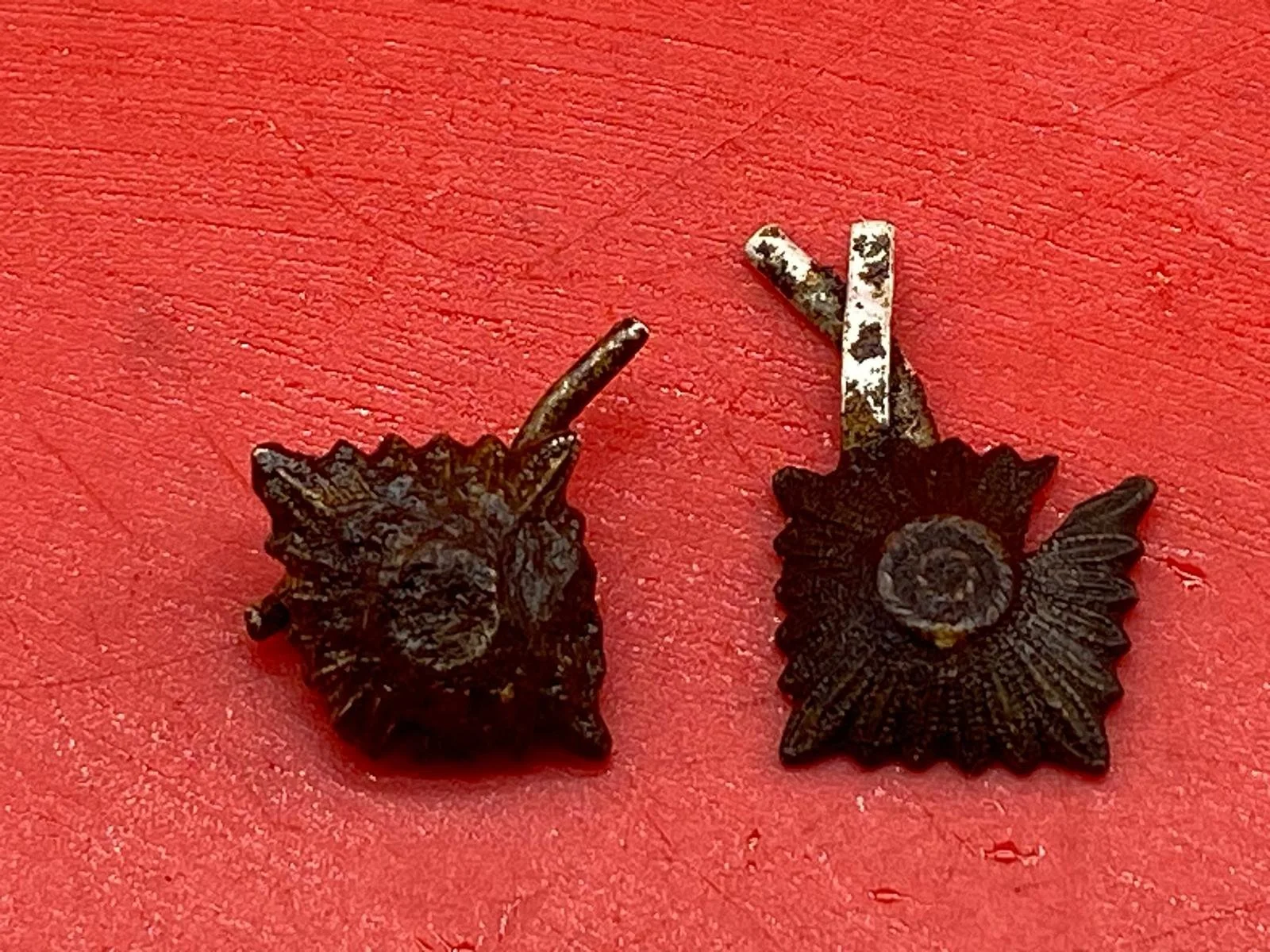 Image 1 of 6
Image 1 of 6

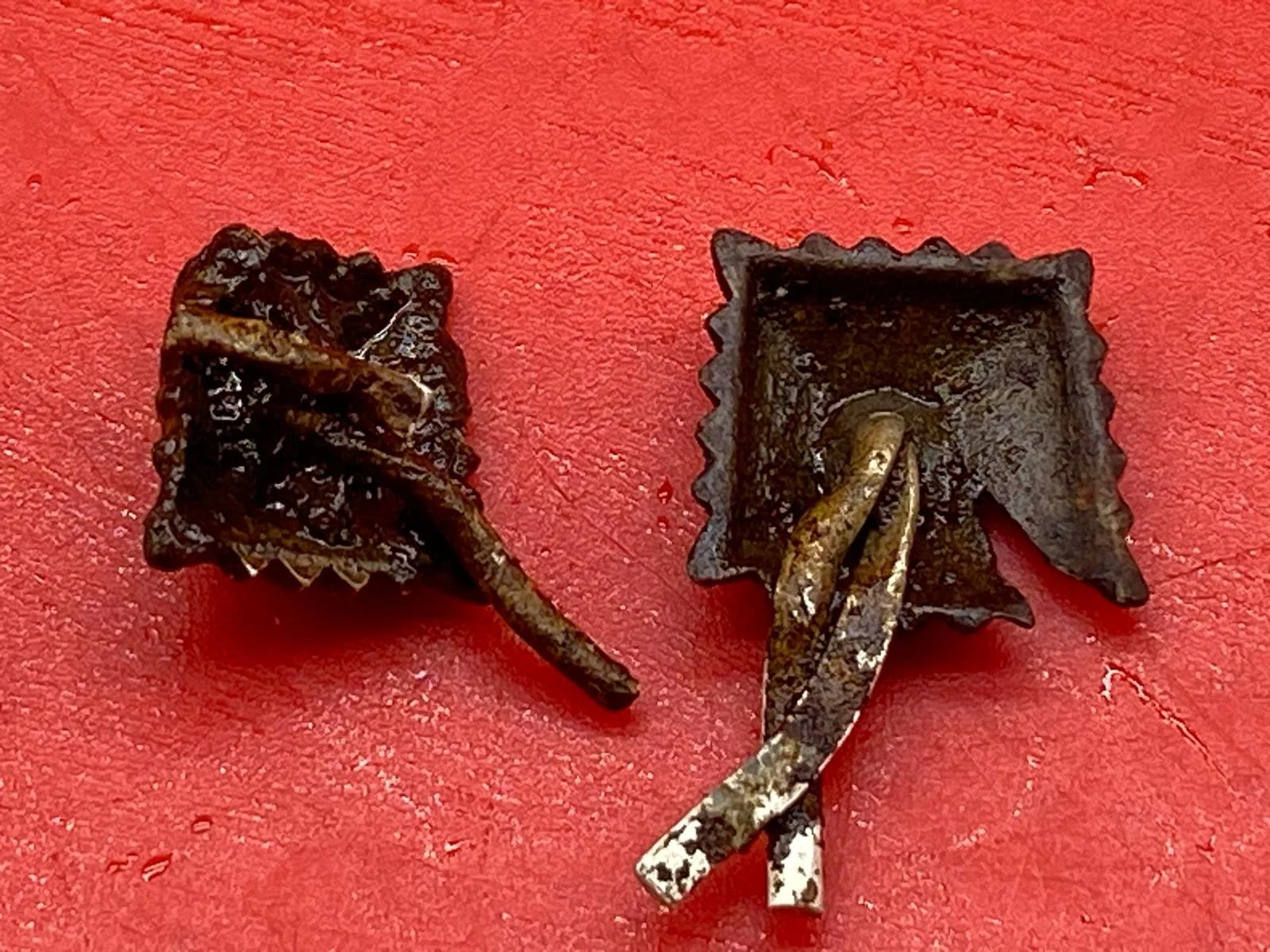 Image 2 of 6
Image 2 of 6

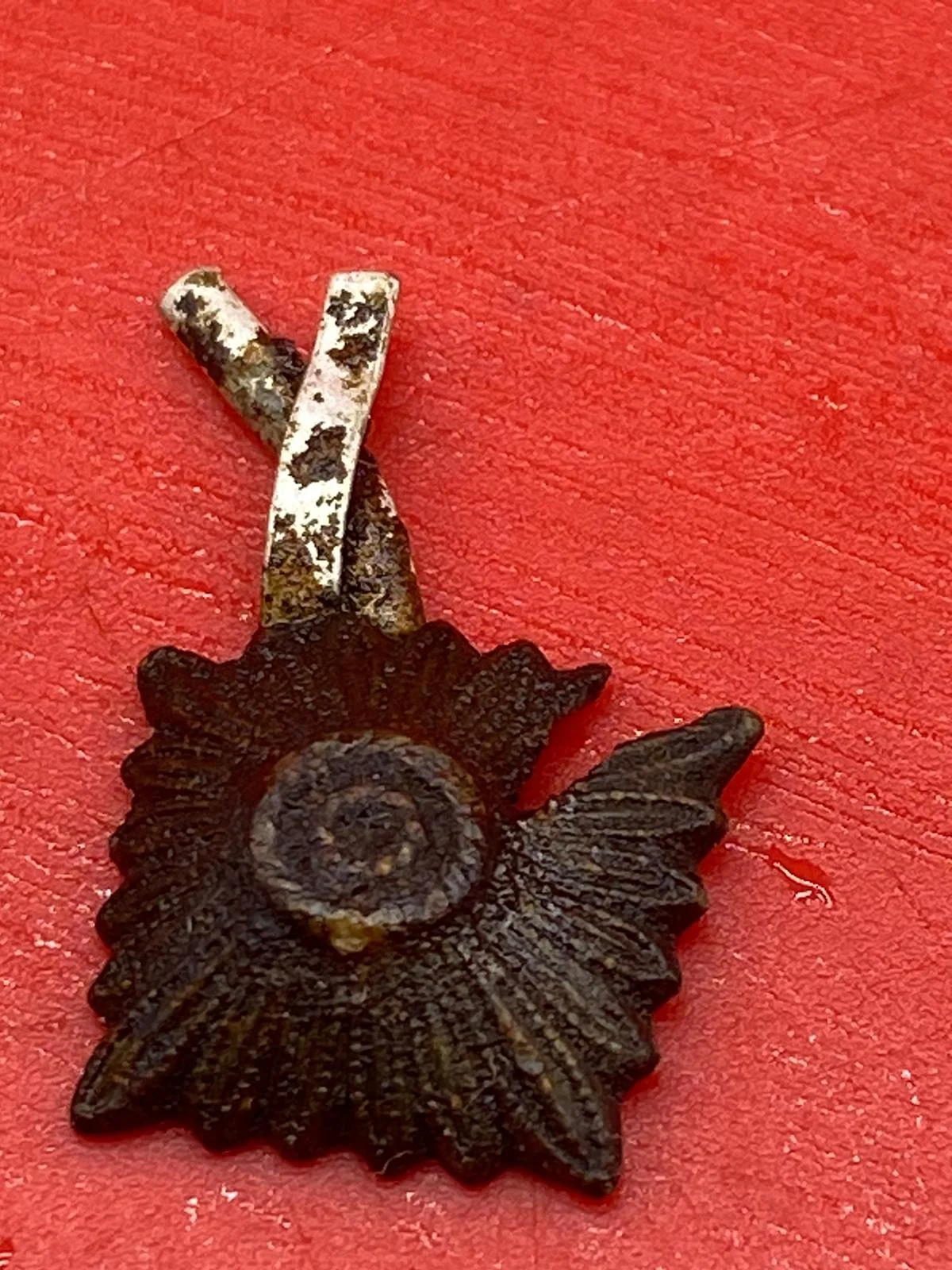 Image 3 of 6
Image 3 of 6

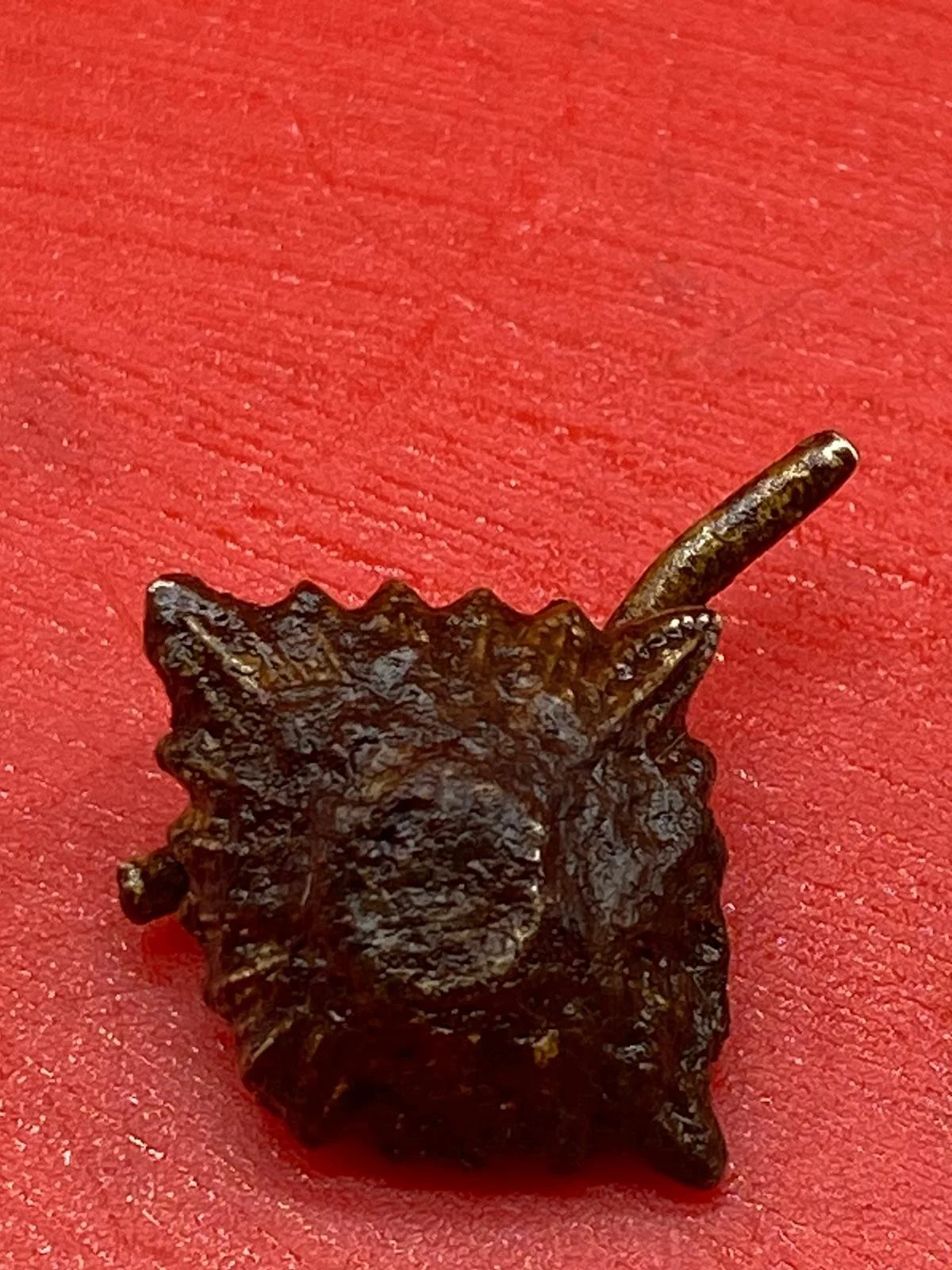 Image 4 of 6
Image 4 of 6

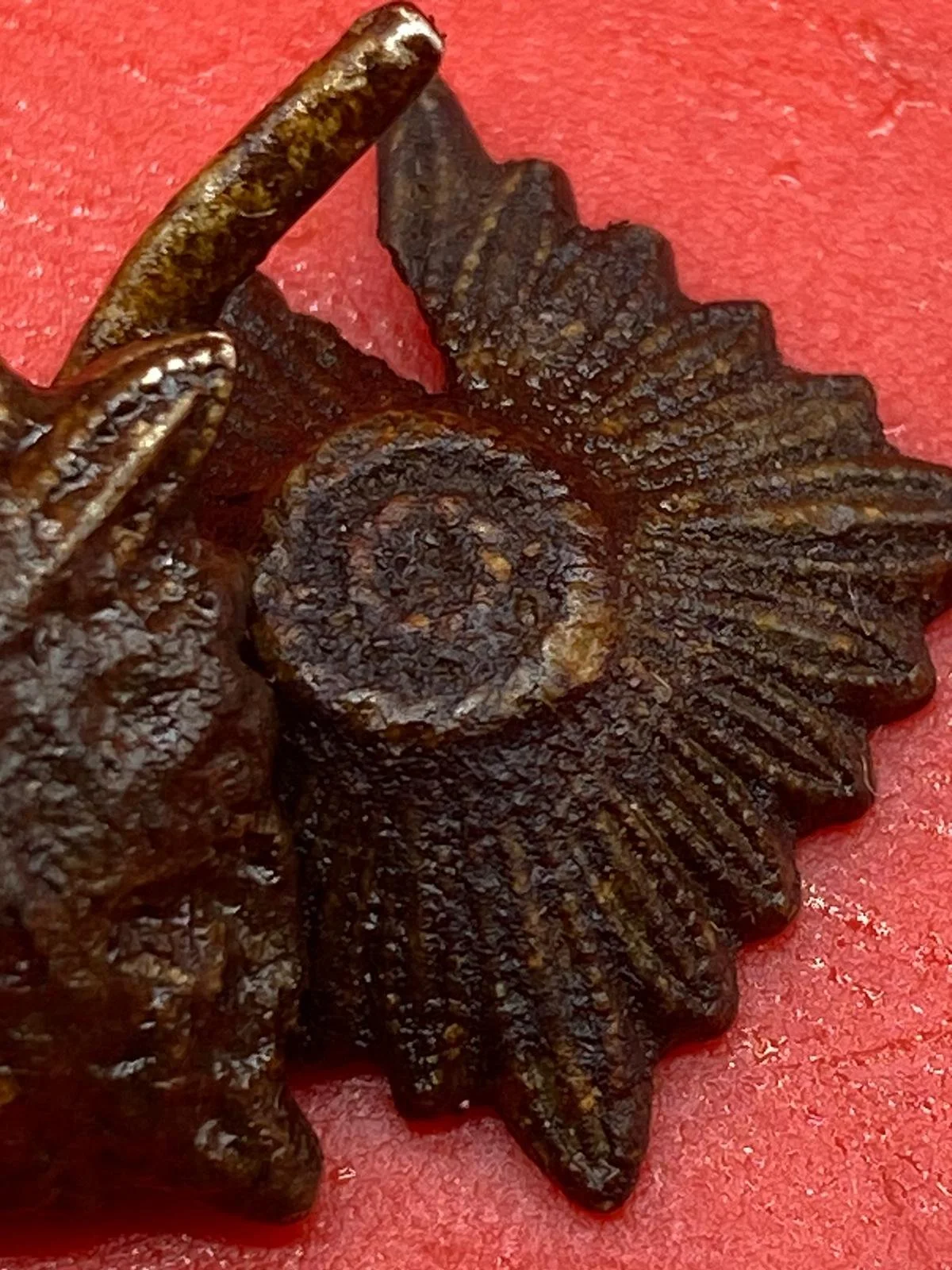 Image 5 of 6
Image 5 of 6

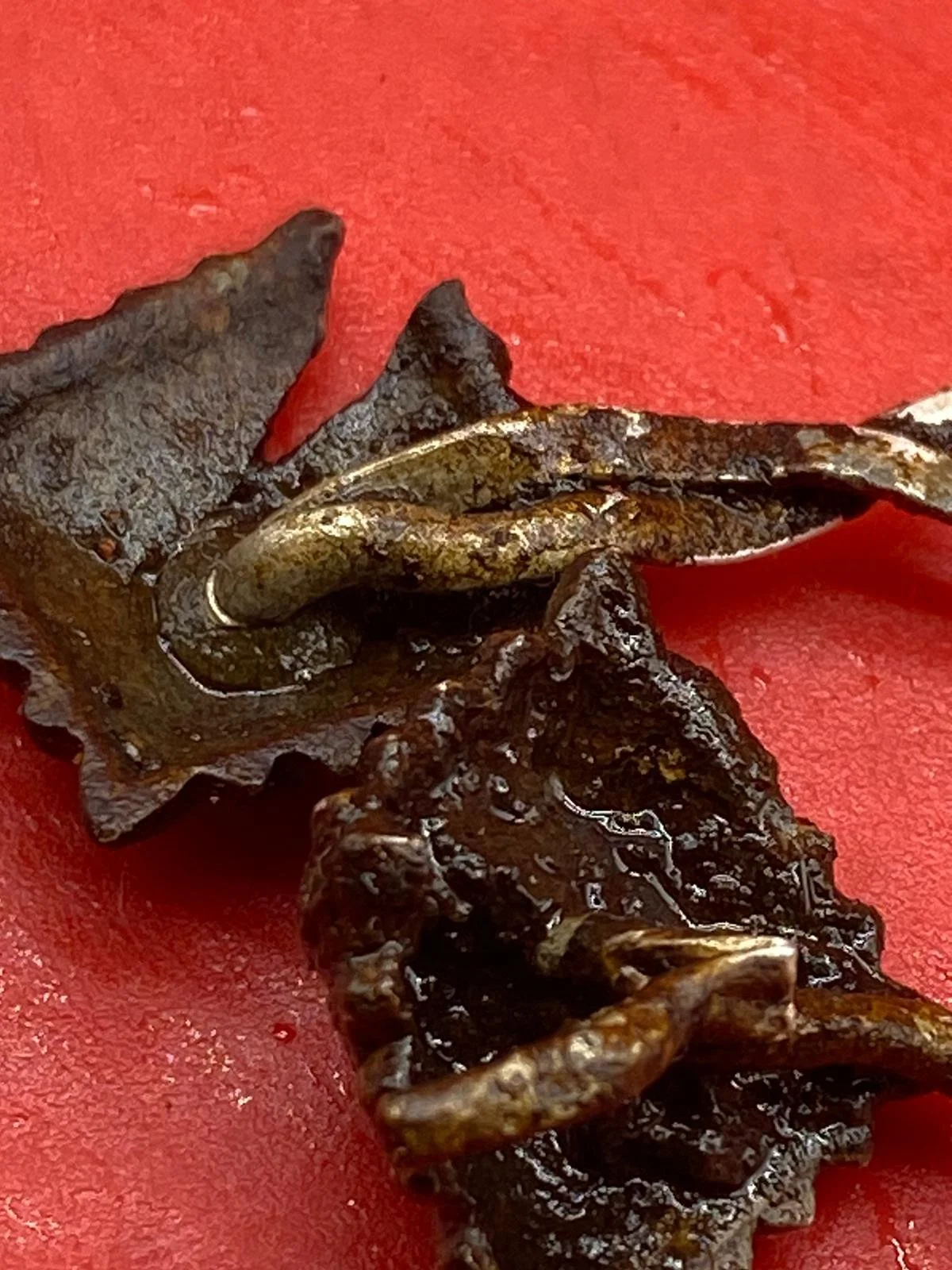 Image 6 of 6
Image 6 of 6







Pair of relic German soldiers shoulder board silver rank pips worn by a soldier of the 1st Panzer Army and were recovered from Don River area outside Rostov-on-Don 1941-42 Stalingrad
This is a pair of German shoulder board silver rank pips, retaining some of their original colour despite significant discoloration. Small fragments of uniform remain attached, and both pips are complete with their pins. They are solid, nicely cleaned relics and are rare to find from the battlefield in this condition, making them ideal for display or any collection.
The pips were worn by a soldier of the 1st Panzer Army and were recovered from the mouth of the Don River area outside Rostov-on-Don, which was attacked by the Army in November-December 1941, south of Stalingrad.
The 1st Panzer Army was a major German tank formation of the Wehrmacht during World War II. Originally formed on 1 March 1940 as Panzer Group Kleist (Panzergruppe Kleist) under Colonel General Ewald von Kleist, it advanced from Kiev, encircled Soviet troops at Melitopol in October, and pushed east along the shore of the Sea of Azov toward Rostov at the mouth of the Don River, known as the gateway to the Caucasus.
The assault on Rostov began on 17 November 1941, with the city falling to German forces on 21 November. However, German lines became over-extended, and Kleist’s warnings about the vulnerability of his left flank and the ineffectiveness of tanks in freezing weather were ignored. On 27 November, Soviet forces launched a counterattack against the 1st Panzer Army’s spearhead from the north, forcing a withdrawal from the city. Hitler initially countermanded the retreat, and when Rundstedt refused to comply, he was replaced by Reichenau. Reichenau quickly recognized that Rundstedt was correct and persuaded Hitler to allow the withdrawal, forcing the 1st Panzer Army back to the Mius River at Taganrog. This was the first significant German withdrawal of the war.
This is a pair of German shoulder board silver rank pips, retaining some of their original colour despite significant discoloration. Small fragments of uniform remain attached, and both pips are complete with their pins. They are solid, nicely cleaned relics and are rare to find from the battlefield in this condition, making them ideal for display or any collection.
The pips were worn by a soldier of the 1st Panzer Army and were recovered from the mouth of the Don River area outside Rostov-on-Don, which was attacked by the Army in November-December 1941, south of Stalingrad.
The 1st Panzer Army was a major German tank formation of the Wehrmacht during World War II. Originally formed on 1 March 1940 as Panzer Group Kleist (Panzergruppe Kleist) under Colonel General Ewald von Kleist, it advanced from Kiev, encircled Soviet troops at Melitopol in October, and pushed east along the shore of the Sea of Azov toward Rostov at the mouth of the Don River, known as the gateway to the Caucasus.
The assault on Rostov began on 17 November 1941, with the city falling to German forces on 21 November. However, German lines became over-extended, and Kleist’s warnings about the vulnerability of his left flank and the ineffectiveness of tanks in freezing weather were ignored. On 27 November, Soviet forces launched a counterattack against the 1st Panzer Army’s spearhead from the north, forcing a withdrawal from the city. Hitler initially countermanded the retreat, and when Rundstedt refused to comply, he was replaced by Reichenau. Reichenau quickly recognized that Rundstedt was correct and persuaded Hitler to allow the withdrawal, forcing the 1st Panzer Army back to the Mius River at Taganrog. This was the first significant German withdrawal of the war.
